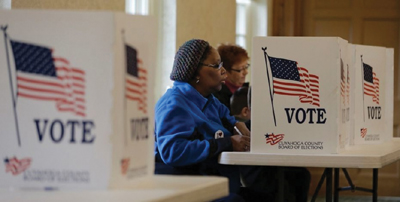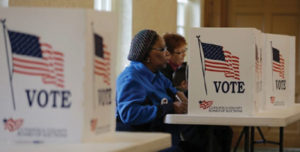Part III of IV Series
Director Comey made many questionable decisions and puzzling statements leading up to the 2016 election. This one can also be added to the list. The statement, while partially true, points to a lack of understanding many elected officials, including county and state election administrators, have when it comes to the inner workings of voting machines. Coupled with the fact that many county election offices have been slow to upgrade staff resources to include personnel skilled in areas to monitor and mitigate such attacks, even approaches with the best intention cannot compete against these new threats.
There are roughly 350,000 voting machines in use in the country today. At the core of these machines is a proprietary software that handles a number of functions, from highlighting a user selection on a screen, to scanning and recording the selections on a paper ballot and tabulating all votes cast from a machine. Proprietary software, also called black-box software, is a set of instructions that are readable only by the machine. While the software that runs the voting machine is secure, hackers at DefCon proved that the software does not safeguard the machine itself from intrusion.
To understand voting machines, let’s start with the fact that it is a highly competitive $300M a year industry. State contracts are usually awarded as a result of wining and dining state- and county-election administrators. Then there is the offer of an advisory board listing on their letterhead and website. This appointment provides legal covering for the administrator to receive lucrative perks such as first-class flights, upscale hotel accommodations and tickets to sporting and entertainment events.
It is said that the industry itself is as equally secretive and problematic as the machines they make. There are approximately ten vendors nationwide, but the top three vendors: Election Systems & Software (ES&S), Hart InterCivic, and Canadian-based Dominion, account for 80% of the voting machines currently in use. Also significant is the industry’s political ties, which are overwhelmingly Republican. This is not to infer any suggested bias or rigging of systems, but in a highly partisan government system such as the one we’re currently experiencing, one is justified in questioning whether state and federal officials are capable of being objective when it comes to machine count tallies, especially in hotly contested race.
Cyber Threats
The effectiveness of social media as a political power tool came to light during Barack Obama’s presidential campaigns in 2008 and 2012. The Obama campaign skillfully used social media platforms, particularly Facebook and Twitter, to drive messaging and mobilize supporters on a magnitude never seen before by a politician.
Soon, other politicians, enticed by social media’s reach and ability to influence, rushed to establish an online presence, although not with the same level of success as Obama. Even Donald Trump, with his bombastic Twitter tirades, has yet to achieve that type of consistent, widespread message-to-action momentum through social media.


